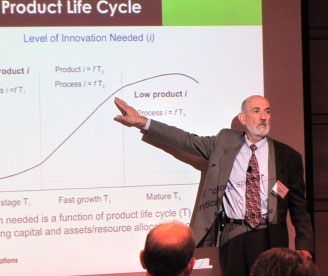Continual product and process innovation are crucial for commercially successful products to maintain their industry dominance, according to MIT Leaders for Global Operations (LGO) industry co-director Vah Erdekian.
|
ADVERTISEMENT |
At the MIT Laboratory for Manufacturing and Productivity annual summit held Oct. 27–28, 2011, students from LGO attended sessions led by industry, government, and academic authorities on manufacturing. In his talk on “Innovation in Manufacturing: From Product Innovation to Productivity,” Erdekian described the case of the U.S. watch industry, which achieved product breakthroughs in the mid-1800s and took the majority of market share for pocket watches from the Swiss, employing hundreds of thousands of American workers at its height. But because the industry wasn’t able to keep innovating, it lost its market share back to Switzerland, which led the shift to wristwatches starting in the 1920s.
|
…

Add new comment